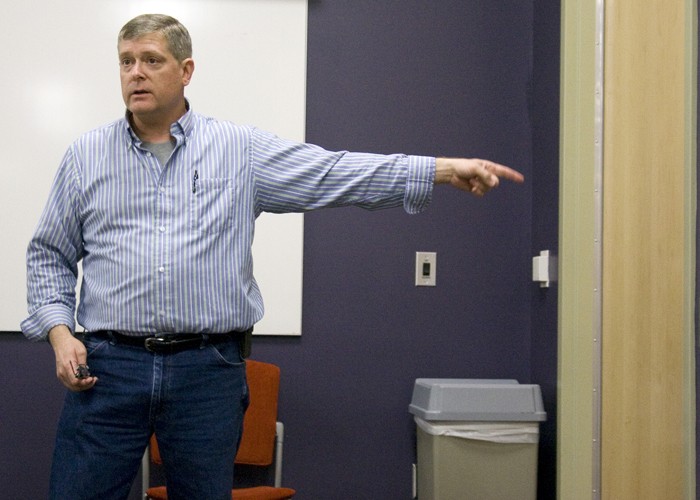The UA tested a new mass notification system on campus last week as a possible resource to improve communication and preparedness should a critical incident occur.
The test message that was broadcast Wednesday and Thursday from speakers on the top of the Administration building could not be heard inside most buildings. The system has not been permanently installed and is just one of the possibilities that the response team is evaluating.
“It (the system) is part of our overall way of trying to enhance emergency notification on campus,” said Cmdr. Brian Seastone, a member of the Campus Emergency Response Team and manager of emergency preparedness at the University of Arizona Police Department.
Such a system would be used to deliver information and instruction to people outside, Seastone said. The response team is also looking into other methods of enhancing emergency preparedness, such as digital signs and intercom systems.
“There are a lot of options so we just have to see what is best for campus and what just fits in with our emergency management communication,” he said.
In addition to the mass notification system, students and faculty are also freshening up on emergency procedures. Dave Swihart, an employee assistance coordinator for UA Life and Work Connections and a licensed professional counselor in Arizona, gave an emergency preparedness presentation to members of the campus community on Wednesday.
The presentation, “Preparedness for Critical Incidents”, was hosted by the BIO5 Institute as part of its Health and Wellness Lecture Series. Swihart described a critical incident as an unusual event that has the potential to be physically and psychologically dangerous.
Examples he gave included fires, gas leaks, accidents and shootings. Swihart used the example of the UA College of Nursing shooting in 2002, when a student killed three professors and himself..
“The biggest problem with the College of Nursing shootings was that people didn’t know what to do,” he said.
Swihart said the keys to surviving such a situation include awareness and mental planning.
“When something happens, people are pretty much their own first responders,” Swihart said. He recommended people think about the layout of their offices, classrooms and houses and decide what exit they would take and what they would do in certain situations. It is important to walk through a plan and become familiar with stairwells, obstacles and exits, he said.
Margaret Baker, coordinator for recruitment and admissions at the College of Pharmacy, said she had done what Swihart had suggested and thought of plans and exit routes out of her office. Baker was in her office near the College of Nursing on the day of the shooting and recalls that students from that building ran into the College of Pharmacy when they heard the shots.
“There are probably some people who are prepared, but I don’t think most people are,” Baker said. “Unless you’ve gone through something like that, you have a really naive outlook on things. You just do, it’s human nature.”
Baker said there was very little communication among the health sciences colleges the day of the shooting and that it led to much confusion. She said she hopes that a resource like the mass notification system will help increase communication during emergencies.
“I think that’s probably the best way to communicate, along with text messaging,” Baker said.
Seastone said he encourages all students, faculty and staff sign up for the UA Alert system. UA Alert sends out text messages to inform the campus community of emergencies and drills.
“So many people now use text messaging,” Seastone said, “and it’s just a great way for people to stay informed of critical incidents.”









